Large-capacity multi-outlet quick charger for electric vehicles
- Kiyohiro Konno
- Shuto Yamamoto
- Koji Maezaki
- Naoki Imai
- Takahiro Kato
- Chihiro Fujimoto
- Masaaki Ishimura
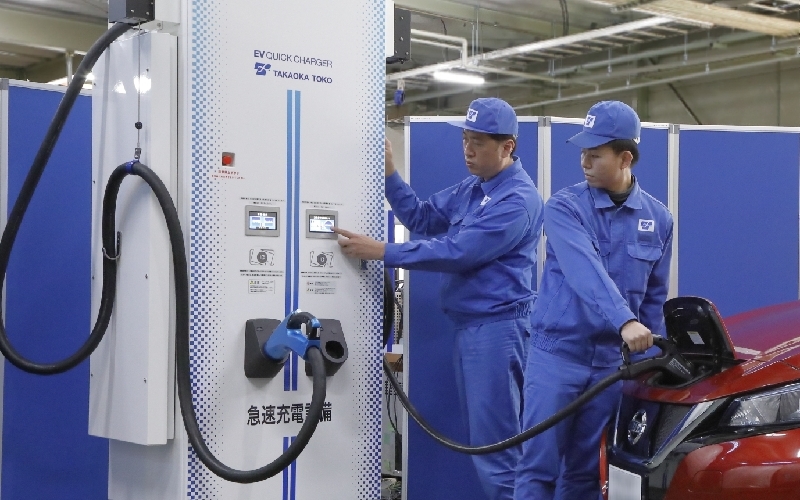
At the 24th Policy Speech at the Diet held in January 2021, then Prime Minister Yoshihide Suga announced that he would "realize 100% electric vehicle sales in new car sales by 2035." Electric vehicles include "Electric vehicles (EV)," "Fuel cell vehicles (FCV)," "Plug-in hybrid vehicles (PHV)," and "Hybrid vehicles (HV)", and vehicles that run only on gasoline (hereinafter referred to as gasoline vehicles) and diesel vehicles will cease to sell. Prior to this, the Tokyo Metropolitan Government announced an initiative to ban the sale of new gasoline-powered vehicles by 2030, five years earlier.
The problem here is how to secure the energy that replaces gasoline, that is, the fuel for electricity and fuel cells. We also need more equipments for charging and refueling fuel cells. Charging equipment is increasing in number year by year. As of September 2021, however, the number of rapid charging equipment in Japan is about 8000, the number of ordinary charging equipment is about 13,000, and the number of gas stations is about 30,000. Considering that, it is still a small number.
Therefore, TAKAOKA TOKO is focusing on expanding the installation of quick chargers with the aim of expanding the charging infrastructure. Currently, TAKAOKA TOKO has about 40% share of Japan's rapid charging equipment, and is working to further expand its share. This time, we have developed a "multi-outlet quick charger" that can charge two EVs at the same time. In order to support the latest EVs, which have increased battery capacity to extend driving distance, we also have achieved a large capacity.
Technology
Two types of multi-outlet quick chargers available for simultaneous charging of two units are selectable depending on the operating conditions: 38mm2 and 70mm2. When charging with only one charging cable, it supports up to a maximum output of 90 kW*. It also has a "power sharing" function, which controls the output upper limit 120kW of the entire device so as not to exceed when two ports are charged simultaneously.
*If the EV supports dynamic control, which can control the amount of charge in real time according to the status of the charger.
In addition to being able to charge two devices at the same time, it has many functions that are easy to use. One of them is the operation panel. The touch panel type is easy to operate, and by providing two dedicated ports, two users can operate at the same time without worrying about each other. In addition, a sufficient cable length is ensured so that the charging cable can reach wherever the charging plug of the EV is located. The charging cable is heavy and difficult to handle, but it is easier to handle by providing "cable management" that lifts and supports the charging cable. In addition, it supports FeliCa card for user authentication. It also has a communication function and a function for remote maintenance and management services, such as monitoring and control via a network.

Profile
-
 Kiyohiro KonnoEnergy Solution Business Division
Kiyohiro KonnoEnergy Solution Business Division
System Solution Manufacturing Department
Development Group
Section Manager -
 Shuto YamamotoEnergy Solution Business Division
Shuto YamamotoEnergy Solution Business Division
System Solution Manufacturing Department
Development Group -
 Koji MaezakiEnergy Solution Business Division
Koji MaezakiEnergy Solution Business Division
System Solution Manufacturing Department
Development Group
Manager -
 Naoki ImaiEnergy Solution Business Division
Naoki ImaiEnergy Solution Business Division
System Solution Manufacturing Department
Development Group
Section Manager -
 Takahiro KatoEnergy Solution Business Division
Takahiro KatoEnergy Solution Business Division
System Solution Manufacturing Department
Development Group
Chief -
 Chihiro FujimotoTechnology Development Division
Chihiro FujimotoTechnology Development Division
Research & Development Center
ICT Technology Group
Chief -
 Masaaki IshimuraEV Infrastructure Business Promotion Project
Masaaki IshimuraEV Infrastructure Business Promotion Project
Section Manager
Efficiently charging two EV
and consideration for installation space
Konno:The need for quick charging is increasing year by year, but the charging infrastructure is not yet sufficient, and congestion waiting for charging is also seen. Therefore, we introduced a large-capacity charger using a multi-outlet. Depending on the performance of EV, it can be recharged at a speed that is approximately 1.5 to 2 times faster than the quick chargers of up to 50kW currently installed, and two more units can be recharged simultaneously. The power sharing function, which allows two EVs to share the maximum output of 120 kW, allows for fine output adjustments of 10 kW or less, enabling the control to charge the two EVs most efficiently.
Yamamoto:The installation space also has advantages. Installing this two-prong type charger requires much less installation space than installing two single-port type chargers.
Currently, EVs have not yet become widespread, so only one charger or about two chargers are installed in one service area. However, with the declaration of "Carbon Neutral by 2050", it is inevitable that the spread of EVs will increase in the future. In order to achieve this, we must increase the number of charging equipment, but if we increase the number of charging equipment in this narrow land area in Japan, it is necessary to clear the problem of installation space. One of the concepts behind this multi-outlet charger development is to try to reduce the installation area.


Compatible with larger-capacity EV batteries
Contribution to reducing installation costs as well
Kato:One of the reasons why EVs are not popular is the problem of mileage. Compared to gasoline vehicles, the short travel distance is regarded as a problem. If you get stuck in a traffic jam, such as when you are actually traveling on an expressway, you may be worried about the remaining battery power. If you drive EVs up to now, you can only run 200km. If you use the air conditioner, you can only run 150km. This means that it is not suitable for long-distance driving. Therefore, each EV manufacturer is working on increasing the capacity of the battery to extend the mileage, and EVs with actually increased capacity have begun to appear. Conventional 50kW quick chargers can charge up to 80% in 30 minutes, but EV with larger batteries can only charge 50% or less than 40%. In order to solve this problem, the development concept is to increase the capacity of the charger.
Ishimura:TAKAOKA TOKO's EV infrastructure business is being developed under the business slogan of "Charging on your side," which provides familiar and easy-to-use solutions that are always close to the users.
What is required as an installation location for multi-outlet chargers is an application called "route charging" where you want to charge the battery on the way to a destination. The advantage of the multi-outlet charger is that the installation cost can be reduced.
And also, if after installing one single-port charger, rather than adding one more unit due to shortage, it is cheaper to install this charger from the beginning, and the power supply can be routed through one line.
Superior user interface and usability
from the user's point of view
Imai:TAKAOKA TOKO is a company that develops mainly electric power infrastructure, so there are many developments from the perspective of equipment managers regarding the design and manufacture of devices. However, since the multi-outlet charger is used by general users, an intuitive user interface has been adopted. First, we adopted a touch-panel type color liquid crystal that displays guidance for operation, so that the user can understand the procedure of the operation simply by viewing the screen.
Konno:In addition, the charging cable has become thicker and heavier due to the increased capacity, but we have newly adopted a "cable management system" that lifts the charging cable and makes it easier for users to handle. I believe that the heavy charging cable made it difficult to handle it, but I think this made it easier.

Willingness to spread WeCharge, an outlet recharging equipment for condominiums and other housing complexes

Maezaki:Multi-outlet quick chargers are intended to be installed in service areas, commercial facilities, roadside stations, etc., but TAKAOKA TOKO is also working with Ubiden on WeCharge, an outlet charging facility for condominiums and other apartment complexes. As environmental awareness increased in 2021, this project began to collaborate with Ubiden to not only popularize EV chargers, but also add more value from the perspective of carbon neutrality.
Fujimoto:We worked by setting FY2021 as the first year for the spread of "WeCharge." For that reason, development was done with a sense of speed. Ubiden was in charge of the smartphone app, authentication, and billing, and our company was in charge of the cloud-based system for status management, maintenance, and inspections. We were able to start the service in a period of months. There are still a number of issues to be addressed in the future, such as the ability to continue services even in the event of a system failure. However, we have decided to take steps to expand the use of this system.

Finally-Towards a carbon neutral future-
Gasoline cars can be refueled in about 5 minutes. However, if the EV aims to be fully charged from a low charging rate state, even quick charging will take more than 30 minutes. However, these inconveniences will be resolved in the future. As the performance of the battery progresses, the charger will be improved accordingly, and the charging time will be shortened to 10 to 15 minutes. Also, with the expansion of charging equipment, there will be less worry about running out of battery when driving long distances. TAKAOKA TOKO is also working on developing a system for using EV batteries at home in the event of a disaster. In the near future, we would like to realize a system that works with local solar panel charging systems to turn unused and wasted electricity into EVs to improve efficiency.
Latest articles
-
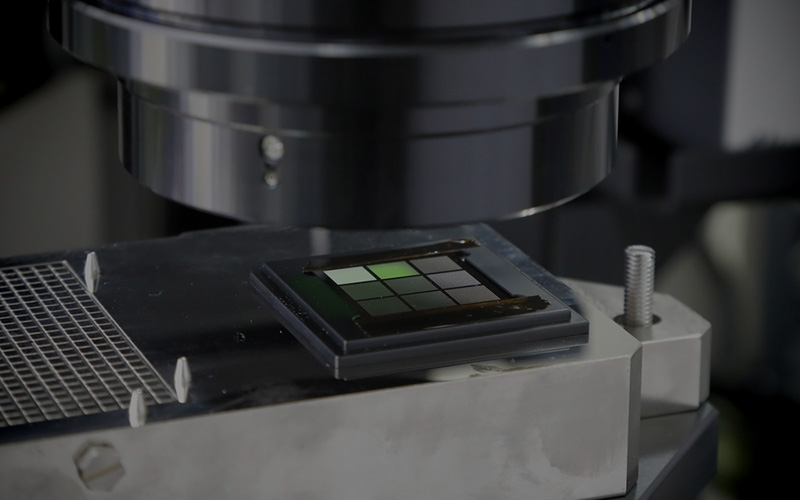 interviewThe confocal surface shape measurement system for semiconductor reliabilityIt is no exaggeration to say that semiconductors are used in everything supporting our lives and industry in modern society. Examples include smartphones, home appliances, and industrial products in various fields.
interviewThe confocal surface shape measurement system for semiconductor reliabilityIt is no exaggeration to say that semiconductors are used in everything supporting our lives and industry in modern society. Examples include smartphones, home appliances, and industrial products in various fields. -
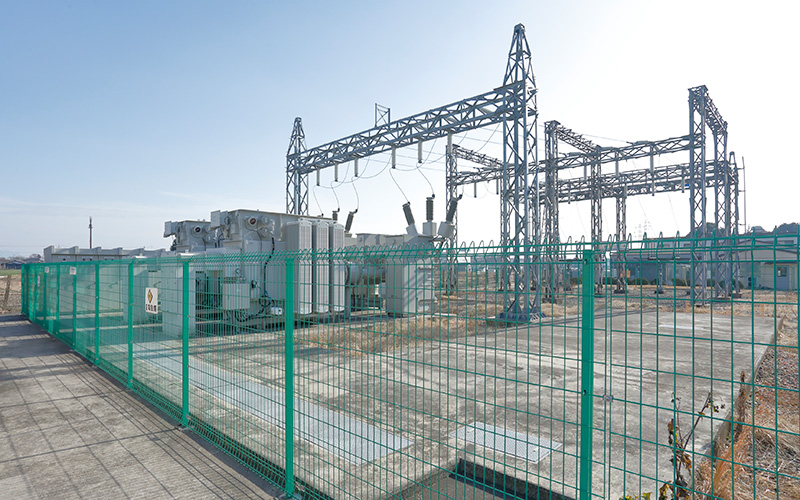 interviewImplementation of a Sensor Solution for Substation DigitalizationGlobal energy prices remain at high levels. The presumed cause is the imbalance between energy supply and demand due to recovery in economic activity from the spread of COVID-19, unseasonable weather, disasters, Russia's invasion of Ukraine, and other factors. The soaring energy prices naturally have an impact on the electricity sector, putting not only ordinary households but also electricity suppliers, or electric power companies, in a difficult situation. Power companies are being forced to cut costs to keep power prices down.
interviewImplementation of a Sensor Solution for Substation DigitalizationGlobal energy prices remain at high levels. The presumed cause is the imbalance between energy supply and demand due to recovery in economic activity from the spread of COVID-19, unseasonable weather, disasters, Russia's invasion of Ukraine, and other factors. The soaring energy prices naturally have an impact on the electricity sector, putting not only ordinary households but also electricity suppliers, or electric power companies, in a difficult situation. Power companies are being forced to cut costs to keep power prices down. -
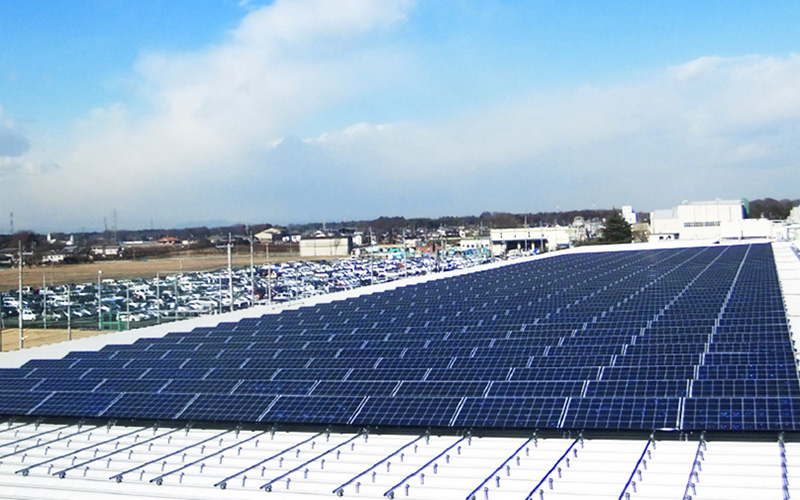 interviewDevelopment of Techniques for Solar Power Generation Prediction Using AIIn order to promote carbon neutrality, the use of renewable energy that doesn't emit CO2 is expanding.Among renewable energy resources, solar power generation is an important one which will continue to grow in popularity.
interviewDevelopment of Techniques for Solar Power Generation Prediction Using AIIn order to promote carbon neutrality, the use of renewable energy that doesn't emit CO2 is expanding.Among renewable energy resources, solar power generation is an important one which will continue to grow in popularity. -
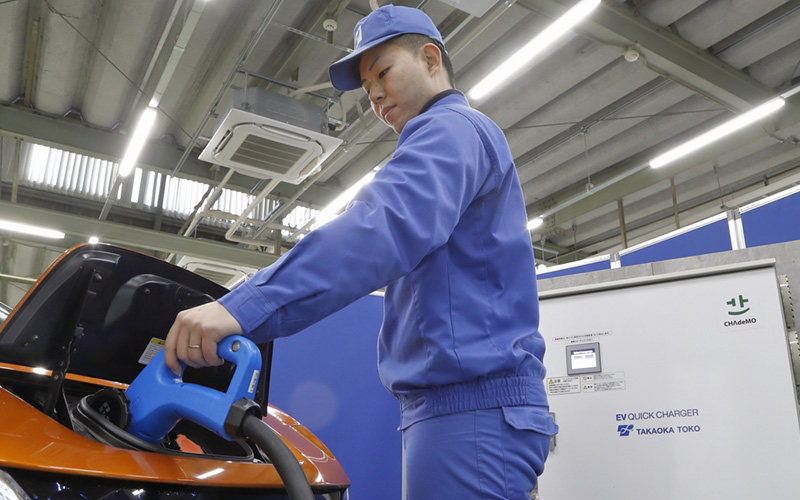 interviewDevelopment of Medium-Capacity Quick Charger for Electric VehiclesIn anticipation of expansion of EV charging infrastructure in Japan, where the EV shift is accelerating, we worked on the development of the “medium-capacity quick charger (B11)” as a charger that meets the needs for intermediate chargers between normal chargers and quick chargers. This article introduces the features of the product, ingenuity in the development process, and our future vision.
interviewDevelopment of Medium-Capacity Quick Charger for Electric VehiclesIn anticipation of expansion of EV charging infrastructure in Japan, where the EV shift is accelerating, we worked on the development of the “medium-capacity quick charger (B11)” as a charger that meets the needs for intermediate chargers between normal chargers and quick chargers. This article introduces the features of the product, ingenuity in the development process, and our future vision.
